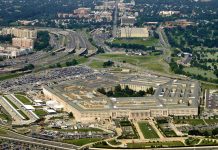
The Federal Aviation Administration (FAA) has ordered urgent inspections of Boeing 787 Dreamliners following a terrifying mid-air plunge that left dozens injured.
At a Glance
- FAA mandates inspections of Boeing 787 Dreamliners after a LATAM flight’s sudden dive injured 50 passengers
- Directive affects 158 US-registered and 737 worldwide aircraft
- Inspections focus on captain’s and first officer’s seats due to potential malfunction
- Boeing reports four additional similar incidents, raising safety concerns
FAA Takes Action After Mid-Air Scare
In a move that underscores growing concerns about airline safety, the Federal Aviation Administration has ordered immediate inspections of Boeing 787 Dreamliners. This directive comes in the wake of a harrowing incident where a LATAM Airlines flight experienced a sudden 400-foot plunge, injuring 50 passengers. The FAA’s decision reflects the urgent need to address potential safety hazards in one of the world’s most widely used long-haul aircraft.
The inspection order affects a total of 895 aircraft worldwide, including 158 registered in the United States. Airlines must thoroughly examine the captain’s and first officer’s seats on 787-7, 787-9, and 787-10 models within 30 days. The focus is on identifying missing or cracked rocker switch caps and nonfunctional switch cover assemblies, which could lead to serious consequences if left unchecked.
The US Federal Aviation Administration said it would require inspections of Boeing 787 Dreamliners following an incident in March when a LATAM Airlines plane went into a sudden mid-air dive that injured more than 50 passengers https://t.co/sRf34aIJCT
— Reuters (@Reuters) August 20, 2024
The Incident That Sparked Concern
The FAA’s directive stems from a frightening episode on March 11, when LATAM Flight 800 experienced what was described as an “involuntary movement forward” of the captain’s seat. This seemingly minor malfunction had severe consequences, causing the aircraft to plummet 400 feet. Around 50 passengers were injured. The incident highlighted a potentially widespread issue that could compromise flight safety.
“The FAA said the ‘uncommanded horizontal movement’ of the captain’s and first officer’s seats during LATAM Flight 800 had ’caused the control column input to disconnect the auto-pilot, resulting in a rapid descent until the First Officer took control of the flight,'” Al Jazeera reported.
Boeing has also reported four additional similar occurrences, with the most recent happening in June. These reports have raised alarms about a potentially systemic issue that could affect passenger safety across the globe.
Boeing Under Scrutiny
This latest directive adds to the ongoing scrutiny Boeing faces regarding its aircraft safety. The company is still reeling from the aftermath of the 737 Max crashes in 2018 and 2019, which led to a lengthy grounding of the aircraft and a guilty plea to fraud charges. Boeing is also under investigation for a January incident where a 737 MAX lost part of its fuselage mid-flight, further eroding public confidence in the manufacturer.
While Boeing has expressed support for the FAA’s directive, the company’s track record in recent years has left many questioning its commitment to safety. The repeated incidents and subsequent investigations have not only tarnished Boeing’s reputation but have also raised concerns about the overall state of aviation safety in the United States.
The FAA’s decisive action serves as a reminder of the critical importance of rigorous safety protocols in the aviation industry. As investigations continue and airlines work to address these concerns, regulatory bodies are actively working to preserve safety in the skies.
Sources
- US orders inspections of Boeing 787 planes following midair plunge
- US FAA requires inspections of Boeing 787 planes following mid-air dive














